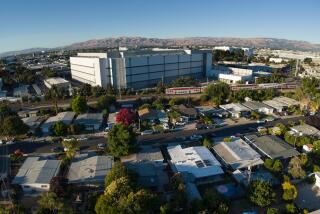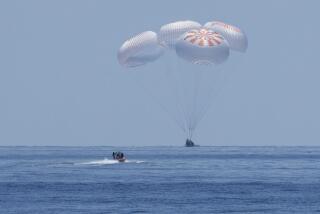Officials Tout S.D.’s Future as Science Mecca
- Share via
SAN DIEGO — The city’s selection as headquarters for a prestigious $1.2-billion fusion research center is being touted as proof that this former Navy town will enter the next century as one of the world’s most respected centers for scientific research.
The bold predictions are fueled by the International Thermonuclear Experimental Reactor program’s decision Tuesday to pick San Diego as the base for an unprecedented, six-year attempt to design a reactor capable of withstanding the tremendous heat needed to harness fusion energy.
Earlier in the week, San Diego officials predicted that as many as 200 scientists from the United States, Japan, Europe and the Soviet Union will move to San Diego for the design and engineering project, although it remained unclear Wednesday what the exact figure will be.
ITER officials Wednesday acknowledged that a single site would have been preferable but that political realities and scientific pressures dictated that the unprecedented gathering of fusion researchers be split among San Diego and satellite facilities in Japan and Germany.
“A single site is much better than three sites,” said Boris Nikipelov, one of the Soviet Union’s representatives on the ITER site-selection team. A single site would be “much easier to organize, and it costs less,” he said.
Charles Maisonnier, one of the European Community’s representatives on the team, said he was disturbed by newspaper stories earlier in the week that pegged San Diego as headquarters for the project. The ITER program will be divided equally among participating countries, he said.
“I think we got a few people overseas mad,” said one San Diego official, who asked that his name not be used. “I think (ITER officials are) going to try and soft-pedal the number of people who will be in San Diego.”
However, although the researchers will be split among San Diego, Japan and Germany, “the center of intellectual activity will be here,” UC San Diego Chancellor Richard Atkinson said at a news conference Wednesday.
ITER, when coupled with San Diego’s reputation as a mecca for research in the life and physical sciences, ensures that the city will soon be known as “one of the three or four key (research) centers in the world,” Atkinson said.
Yet he acknowledged that San Diego’s bid for the project was almost dashed by foreign scientists’ concerns about the poor condition of California’s elementary and secondary schools. Atkinson said it was an “incredible embarrassment” for the rest of the world to have such grave doubts about the quality of California education.
ITER will pump an estimated $200 million into the local economy--in the goods and services purchased for the project and in the homes rented and retail purchases made by scientists and their families.
The intense negotiating sessions that led to San Diego’s selection as host city illustrate how difficult it is to set up international research consortia. Negotiations have been under way for a year, with teams meeting in Washington, Japan and Europe. A final session is scheduled in the Soviet Union later this year.
Meanwhile, countries that are supporting the research project have yet to provide funding.
“We have made very solid technical progress, but the politicians are moving at their own, slow speed,” one U.S. scientist involved with ITER said.
U.S. and French officials Wednesday suggested that funding issues could be resolved by January, and that the first ITER scientists could begin work early in 1992.
Despite the difficulties caused by the decision to have three research centers, scientists said international efforts are the only way to handle the incredibly complex and expensive project.
“This is perhaps the first big example of ‘big science, big technology,’ ” said Marshall Rosenbluth, a physics professor at UCSD, which will serve as the host for ITER.
Since the 1950s, scientists have dreamed of fusion energy plants that would produce relatively inexpensive power in environmentally benign facilities. But, as Rosenbluth, a fusion researcher for 38 years, noted, “as time has gone on, the more we learn, the more there seems left to do.”
Consequently, big-science projects “really (have) to be done this way” because of costs, Rosenbluth said. “It really has to be done by international collaboration. . . . This is a new experiment in how to do such science. . . . It’s a very tough job politically, as well as technically and scientifically.”
Nikipelov said the decision to split the research among three countries does not bode well for the negotiating teams that will eventually decide where to build a next-generation fusion reactor. Nikipelov suggested that the negotiators might have to find “an island which belongs to all . . . parties together.”
More to Read
Sign up for Essential California
The most important California stories and recommendations in your inbox every morning.
You may occasionally receive promotional content from the Los Angeles Times.












